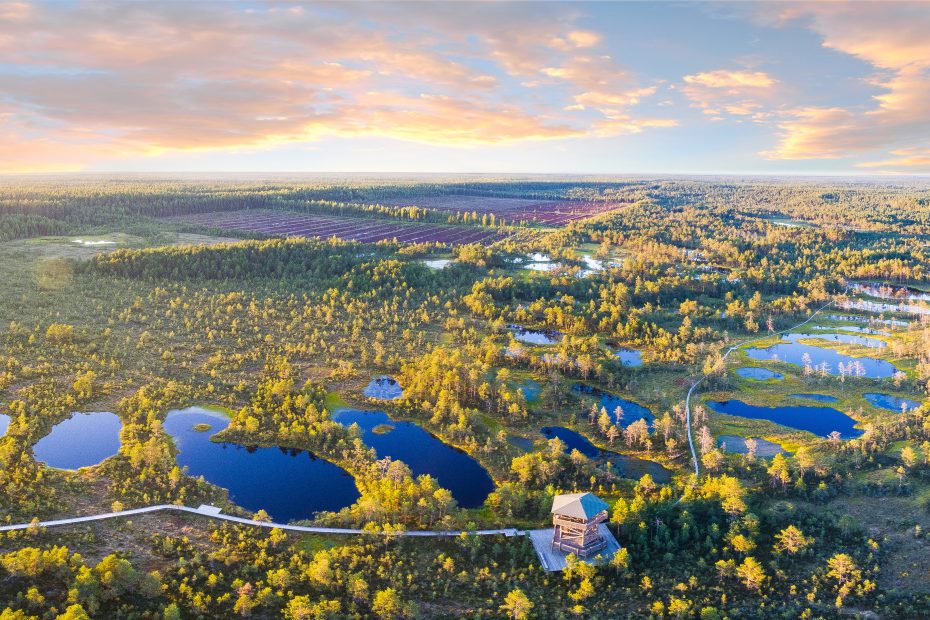Table of Contents
Introduction
Although small in size, Estonia packs a punch when it comes to fascinating destinations. Beyond the cobblestoned streets of Tallinn’s medieval Old Town and the trendy cafes of Tartu lie dozens of hidden gems waiting to be explored. From windswept islands to vast national parks, get ready to venture off-the-beaten-path to uncover Estonia’s secrets.
Northern Estonia
Lahemaa National Park
With its pristine forests, coastal cliffs, and winding rivers, Lahemaa National Park offers outdoor enthusiasts ample opportunities for hiking, biking, and swimming. Visitors can explore the charming 18th century Palmse Manor or discover the picturesque Altja fishing village nestled within the park.
Altja Fishing Village
This tiny seaside village provides a glimpse into traditional Estonian life. Wander the cobblestone streets, visit the small museum housed in a former distillery, and chat with the few dozen villagers who still call this idyllic spot home. Don’t miss the opportunity to sample smoked fish fresh from the sea.
Rakvere Castle
Rakvere Castle towers over the town of the same name in northern Estonia. Climb to the top of the castle’s tall observation tower for panoramic views. Visitors can also check out medieval weapon displays, weave through hidden passages, or take part in various festivals held within the castle walls throughout the year.
Western Estonia
Haapsalu Seaside Resort Town
Beloved by 19th century Russian aristocracy, the seaside resort town of Haapsalu still retains its old world charm. Stroll along the promenade, get a mud treatment at the spa, or relax on the long, sandy beach. For culture, be sure to visit the lace-making museum or the historical train station.
Matsalu National Park
Birdwatchers flock to Matsalu National Park, an important wetland habitat for over 200 species of birds. Spring and autumn offer the best birding opportunities. Visitors can also explore walking trails, visit the nature center, or tour the Kasari River by canoe or kayak.
Pärnu Beach Town
Pärnu transforms in summer from a quiet town to a vibrant beach destination. Sunbathe on the soft, white sand beach or pose next to the iconic ‘kissing students’ sculpture. The lush parks, outdoor cafes, and old town charm also make Pärnu an appealing off-season retreat.
Southern Estonia
Tartu University Town
Esteemed Tartu University gives Estonia’s second largest city a spirited, youthful vibe. Beyond the university, Tartu boasts a beautifully restored town center with the historic town hall and cathedral. Nature lovers shouldn’t miss the Emajõgi River or Toomemägi Park.
Otepää Winter Sports Centre
Known as Estonia’s winter capital, Otepää offers excellent skiing, snowboarding, cross-country skiing, and more. Come during the summer to bike and hike around the hilly landscape instead. The surrounding Tehvandi Forest offers prime berry and mushroom picking as well.
Setomaa Culture and Villages
Discover the unique culture and villages of the Seto people who reside in southeastern Estonia near the Russian border. Admire their colorful folk costumes, sample their cuisine, and browse the local handicrafts. Don’t miss the Obinitsa Museum for an immersive experience.
Eastern Estonia
Narva Hermann Castle
Perched at the edge of Estonia along the Russian border sits the impressive Hermann Castle. Dating back to the 13th century, the castle affords panoramic views over the Narva River. Visitors can wander through the historic rooms and stroll along the riverside promenade.
Toila Seaside Cliffs
The jagged seaside cliffs near the resort town of Toila make for scenic hikes and photo opportunities. Scale the metal staircase to enjoy sweeping views of the Gulf of Finland from the clifftops. Nearby also lies an abandoned Soviet submarine base worth exploring.
Alutaguse Forests
The lush forests of the Alutaguse region offer outdoor enthusiasts plentiful options for hiking, biking, camping, fishing, mushrooming, and more. Observe wildlife like elk, deer, foxes, beavers, and rare black storks as you journey through the remote woodlands and marshes.
Islands
Saaremaa Island
With windmills, lighthouses, tiny villages, and stark landscapes, Saaremaa encapsulates Estonian island life. Be sure to see the iconic Angla windmill, walk along the cliffside trail at Panga, sample smoked meat in Muhu, and soak in the Kuressaare seaside spas.
Hiiumaa Island
Hiiumaa oozes relaxation with its slow pace and serenity. Bike through the Kärdla birch grove, beach hop along the northern coast, and visit the historical Kõpu lighthouse – the oldest still functioning lighthouse in the Baltic Sea.
Kihnu Island
Step back in time on the remote island of Kihnu where locals still wear traditional dress and speak an ancient dialect. Beyond the living cultural immersion, Kihnu also offers fantastic handicrafts like woven belts and bags, along with bountiful seal watching.
Conclusion
Estonia’s wealth of fascinating destinations spans beyond the well-trodden tourist favorites. Venture off-the-beaten-path to uncover breathtaking national parks, captivating island life, charming towns, and remnants of Estonian heritage and culture. Let Estonia’s hidden gems inspire your next adventure.
FAQs
What is the best way to get around Estonia?
Having your own car is ideal for exploring hidden gems in Estonia. If not driving, you can get around by bus, train, and ferry. Domestic flights also connect larger cities quickly.
When is the best time to visit Estonia?
Late spring through early autumn offers the most pleasant weather. May-September tends to be the peak tourist season. Winter sports opportunities make winter appealing too.
What languages are spoken in Estonia?
Estonian is the official language. Many people also speak English and Russian, especially in larger cities. Learning a few Estonian phrases shows respect.
Do I need a visa to visit Estonia?
Citizens of the EU, UK, Australia, Canada, New Zealand, and the US can visit Estonia visa-free for up to 90 days. Other nationalities should check visa requirements.
What currency is used in Estonia?
Estonia is part of the Eurozone and uses the euro (€) as its currency. Cash and credit cards are widely accepted in cities and tourism hot spots.
